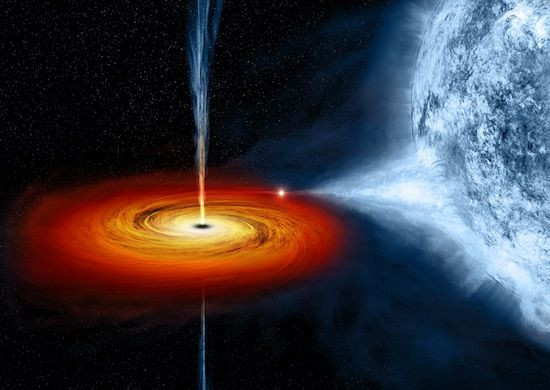Matter Surrounding A Black Hole Revealed In X-Ray

For decades, astronomers and sky-watchers have known about Cygnus X-1, a binary system formed by a stellar-mass black hole and a blue supergiant star orbiting in its proximity.
The pair, located some 6,200 light years away from Earth in the constellation Cygnus, has been subjected to a range of studies, but just recently, an international team of researchers employed a new technique to better understand the shape and physical properties of matter revolving around the black hole.
Designated as the first-ever black hole to be discovered in the universe, the void of Cygnus X-1 weighs nearly as much as 15 suns. It is one of the strongest sources of X-ray seen from Earth, but that bright light doesn’t come from the black hole itself.
As already established, no light at all escapes a black hole. Meaning, there is no direct way to observe this or any other void and understand their properties.
However, scientists have been using X-rays emitted by the matter surrounding black holes to gain some insight. In this particular case, this matter comes from the star in the proximity of the black hole. Stellar winds push material from the companion star into an accretion disk around the black hole, which is then heated to millions of degrees, resulting in the bright X-ray emission.
Scientists have long known about the accretion disk, but nobody really understands the geometry of matter forming it because X-rays scatter in many directions, just like visible light from the sun, due to relativistic effects.
"It's the same situation with hard X-rays around a black hole," Hiromitsu Takahashi, an assistant professor at Hiroshima University and one of the co-authors of the latest work, said in a statement.
In the case of sunlight, a polarized filter can contain the vibrations of light in one direction. "However, hard X-rays and gamma rays coming from near the black hole penetrate this filter,” Takahashi added. “There are no such 'goggles' for these rays, so we need another special kind of treatment to direct and measure this scattering of light".
This is where the group employed a technique called X-ray polarimetry. They deployed an X-ray polarimeter — an instrument for measuring the polarization of light — on a balloon called PoGO+ and measured where the light came from and where it started scattering.
The entire effort revealed how much X-ray reflects from the accretion disk and helped the team predict the shape of the material forming it. They came up with two separate models describing how matter might appear in a binary formed with a black hole — the lamp-post model and the extended model.
According to the first model, the black hole’s corona, a mysterious source of highly-energetic particles, is extremely compact and bound closely to the void. This way, more photons bent toward the accretion disk, leading to an increased amount of reflected light.
The second model, on the other hand, is an exact opposite and suggested that the corona is much bigger and spread around the vicinity of the black hole, resulting in much weaker X-rays from the disk.
Though both theories sounded promising, the team noted that the observations taken in the study are more consistent with the extended model, as there is not much evidence of bending of light near Cygnus X-1’s black hole. They believe this as well as other related work will reveal more about the properties of black holes and their surrounding environment.
© Copyright IBTimes 2025. All rights reserved.





















